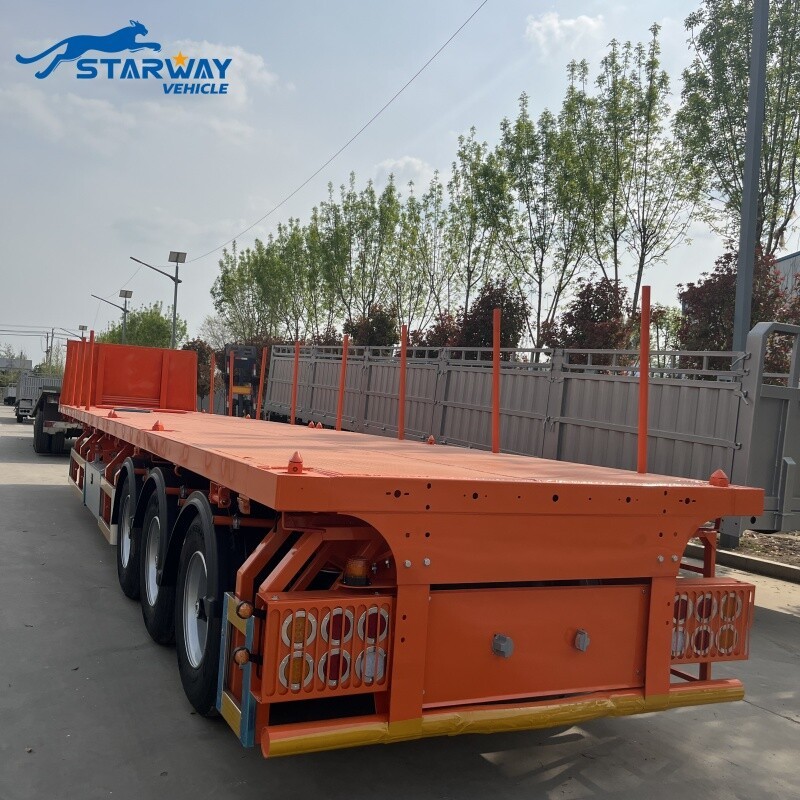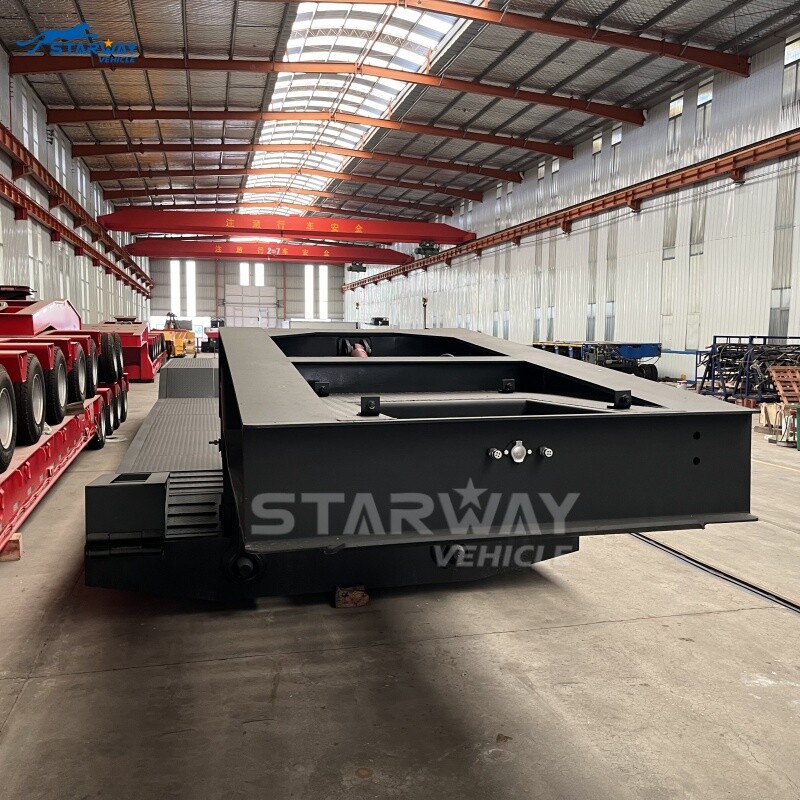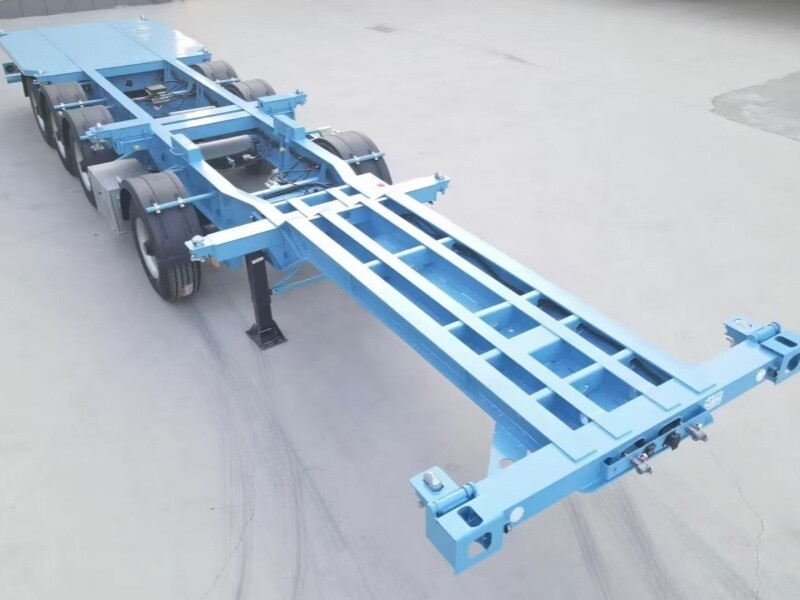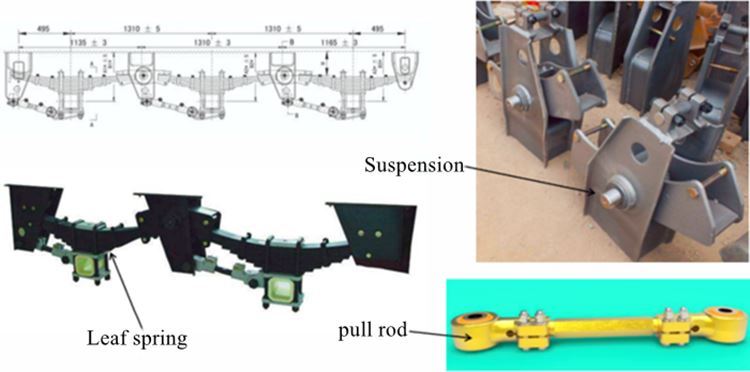Recent Posts
 What is a 4 Axles 40ft Container Skeleton Semi Trailer?2025-03-28
What is a 4 Axles 40ft Container Skeleton Semi Trailer?2025-03-28 Which industries use 70-ton trailers most?2025-03-12
Which industries use 70-ton trailers most?2025-03-12 For hydraulic gooseneck lowbed semi trailer2025-02-18
For hydraulic gooseneck lowbed semi trailer2025-02-18 Comprehensive Guide to Common Types of Semi-Trailers2025-01-09
Comprehensive Guide to Common Types of Semi-Trailers2025-01-09 The Differences Between Full Trailers, Semi-Trailers, and Tractor2025-01-03
The Differences Between Full Trailers, Semi-Trailers, and Tractor2025-01-03
Comprehensive Maintenance Manual for Semi Trailers

Special Reminders
- Introduction to the Main Components of Semi Trailers
- Semi Trailer Electrical System
- Semi Trailer Air System
- Semi Trailer Brake System
- Semi Trailer Inspection and Maintenance
- Container and Tire Maintenance
- Truck Maintenance Guides for Different Seasons
- Winter Vehicle Maintenance Knowledge
Safety is always the top priority for truck drivers during transportation! While renting a semi-trailer can save you worries, proper maintenance is essential to extend its lifespan. Be sure to perform checks before driving to ensure that everything is in order before hitting the road.
Based on the extensive practical experience of market service professionals, this guide summarizes the essential knowledge regarding the use and maintenance of semi-trailers, for the reference of all drivers.

Special Reminders:
- Welding any part of the main beam is strictly prohibited without the guidance of a professional technician.
- Please read the instruction manual carefully and perform regular maintenance.
Daily Maintenance Recommendations:
- Regularly check if the trailer tire bolts are loose.
- Check the suspension system every two days and adjust the tie rods to ensure no bolts are loose.
- Make sure tire pressure is within the specified range when driving.
- Check for air leakage in the air pipes.
- Regularly check the distance between the traction pin and the center of the semi-trailer axle on both ends, ensuring the error does not exceed 1.5mm.
- Check if the steel U-bolts are loose every 5000 kilometers.
- The trailer should not be overloaded, unbalanced, or have concentrated weight in the middle of the frame.
Ensure the spare tire is securely fastened and safety bolts are locked.

Special Reminder:
- After the first 5000 kilometers or one month of use, test and adjust the wheelbase according to the specifications shown in the picture.
1. Introduction to the Main Components of Semi Trailers
- Suspension System (Rigidity): Transfers the load and absorbs vibrations.
- Axle and Wheel Hub System: A single, dual, or triple axle assembly is installed under the suspension. The tire and rim assembly are secured to the wheel hub with tire bolts to support the weight of the entire vehicle.
- Landing Leg Lifting Mechanism: To ensure the semi-trailer remains stationary after being detached from the tractor, two outriggers (linked or single-acting) are provided at the front end of the frame. This system includes a screw drive mechanism, bevel gear drive, a two-speed reduction box, transmission rod, and operating handle.
Kingpin and Guide Plate/Frame: The kingpin at the front of the trailer connects to the tractor's saddle, transmitting both traction force and braking force during operation.

2. Semi Trailer Electrical System
The semi-trailer transmits the light signal from the main vehicle through a spiral cable plugged into the circuit socket at the front of the trailer. The vehicle is equipped with an international standard electrical system to ensure compatibility with the tractor. The electrical system includes seven-core sockets, multi-core cables, junction boxes, waterproof connectors, and various lamps.
Seven-Core Circuit Diagram:
(Visual Representation)
3. Semi Trailer Air System
The primary components of the air system include the emergency relay valve, ABS valve, and brake chamber, which are the most common sources of faults.
- Emergency Relay Valve: This pneumatic component in the braking system ensures emergency braking when the semi-trailer’s air supply line is damaged or disconnected, shortening braking lag time and quickly releasing the brake.
- ABS (Anti-lock Braking System): An electronic control system that monitors and adjusts the vehicle’s braking speed, preventing the wheels from locking and enhancing driving safety.
- Brake Chamber: Responsible for generating braking force in the system.
4. Semi Trailer Brake System
The brake system consists of the air pipe joints, inflation pipe, operating pipe, air reservoir, brake chambers, relay valve, ABS valve, ABS sensors, and wheel brakes. Common brake types include:
- Service Brake: Typically used while driving for decelerating or stopping the vehicle.
- Parking Brake: Used to prevent the vehicle from rolling when stationary.
Air-Cut Brake (Emergency Brake): Engages automatically when the air supply is interrupted or leaks occur, ensuring the trailer stops in an emergency.

5. Semi Trailer Inspection and Maintenance
Routine inspections and maintenance are essential to avoid safety hazards and reduce operating costs.
Inspection Checklist:
- Tires: Check for cuts, cracks, bulges, and proper tire pressure.
- Suspension System: Inspect for cracks in the welding seams, loosened suspension support, and check U-bolts.
- Brakes: Check the brake lines, air circuit, and drum for damage or wear.
- Supporting Device: Ensure all supporting components are intact and functional.
- Wiring Harness and Air Pipes: Inspect for cracks, abrasion, or air leakage, and ensure wiring connectors are in good condition.
- Lights and Labels: Ensure lights are functional and labels are visible and intact.
- Kingpin: Check for excessive wear on the kingpin.
- Container and Locking Mechanism: Ensure the container is properly secured and the locking mechanism is functional.
Hub Maintenance: Regularly inspect and clean the hub system, replace worn grease with new grease, and check components like brake pads and drums. Maintenance intervals may vary based on the type of axle.

6. Container and Tire Maintenance
- Container Structure and Repair Methods: Repair techniques include patching, replacement for large damages, scraping and painting for small deformations, adhesive repairs, and sheet metal correction for bending and deformation.
- Tire Maintenance: Tire pressure has a significant impact on safety. Regular checks and maintenance are critical to ensuring that tires are properly inflated.
7. Truck Maintenance for Different Seasons
- Autumn: Ensure brake fluid levels are sufficient, check the charging system, replace coolant, and inspect tires for damage.
- Winter: Pay extra attention to the heating system, defrosters, air conditioning, and other key components. Check brake fluid and ensure batteries are charged to avoid failures in low temperatures.
8. Winter Vehicle Maintenance Knowledge
- Snow Accumulation: Clean snow from the vehicle immediately to prevent it from affecting visibility. Consider using newspapers and tape to cover the windshield before snow falls.
- Window Care: Use a dry cloth to clean windows to prevent them from freezing.
- Door Lock Maintenance: Lubricate the keyhole to prevent freezing and ensure the door opens smoothly.
Antifreeze: Use the correct antifreeze mixture, and replace it if it's been in use for more than two years. Regularly check brake fluid and electrolyte levels in the battery.
By following these seasonal maintenance guides and staying on top of regular checks, you can ensure your semi-trailer remains in optimal condition for any driving environment.
Leave A Reply








